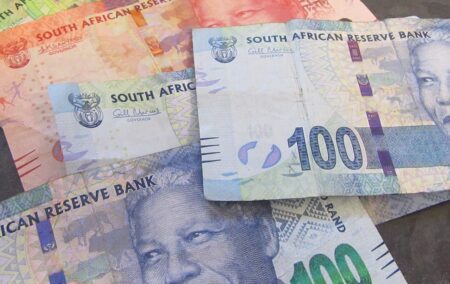One edifice of the South African state has survived the African National Congress’s (ANC) wrecking ball. Since the ANC came to power, there has been catastrophic unemployment, black children have been cheated out of proper education, economic growth has been choked, public health has failed, electricity supply has been wrecked, our mining has failed on top of the world’s greatest mineral treasure, the national airline and railways have been ruined, and our industries and manufacturing are in terminal decline. One institution that has survived more-or-less intact is the Rand.
When the ANC came to power 26 years ago, one Rand could buy 28 US cents. Today it can still buy 6 US cents. (1994: $1 = R3.58. 2020: $1 = R17.41.) That’s not bad. The Rand remains a respectable international currency. How long will this last?
As a liberal, I believe in a limited state that performs only essential services, such as defending its citizens, ensuring rule of law, and helping those who cannot help themselves. I believe it also has the duty to protect the national currency. (Some liberal economists prefer private banknotes; I understand money too little to comment.)
In many African countries, the national currency collapsed after independence, and a black-market currency existed next to the official currency. People knew the official currency was worthless and the real economy depended on transactions with foreign currency, but you could be punished if you were caught with foreign currency, which was reserved for the ruling elite. I’ve had frightening experiences of this.
The South African economy is in a terrible mess. Debt is high and rising. State-owned enterprises, horribly indebted, must get money from the Treasury, which is itself indebted and desperately looking for other sources of money, such as our pension funds. So far, the ANC has managed the Reserve Bank and Treasury responsibly, resisting pressure from revolutionary comrades to be expansive with the national finances. But pressure will increase now that we’ve crawled to the International Monetary Fund. The comrades know there is an easy method to reduce our debt. Zimbabwe, the ANC’s guiding star, has shown the way.
Just add a string of noughts
How high is a pile of one trillion dollars? Thousands of kilometres, according to the internet. But that’s for US dollars. Thanks to the genius of Robert Mugabe, a pile of one trillion Zimbabwe dollars would be about 0.1 mm high. It would consist of a single banknote. Most South African debt is Rand-denominated, and so could be paid off overnight were the Reserve Bank either to print a lot of banknotes or, to save paper, just add a string of noughts to the existing notes, as Zimbabwe did.
Eskom’s debt is now about R450 billion. Suppose it were all Rand-denominated (I think most of it is). Eskom could pay off its creditors with one R1 trillion note, and ask for change – which might be enough for a cup of coffee.
From the ANC’s point of view, such corruption of the currency could offer juicy BEE possibilities. If the official exchange rate and the real (black-market) rate varied wildly, the Reserve Bank could pass an edict that the senior comrades could change a portion of their Rands at the official rate, and then change it back again at the black-market rate, so making a handsome profit, which is what Mugabe’s Zanu-PF comrades did. There would be some unfortunate consequences, such as economic collapse, mass starvation and so on, but these might be considered worth paying to further the National Democratic Revolution.
Investors are fleeing
What about us poor suckers trying to protect our miserable savings? Foreigners are becoming reluctant to lend to us. This shows up in the bond market, where yields are rising, which means investors are fleeing. My limited understanding of the mechanism is this; the bond yield is proportional to the coupon value (the fixed interest rate of the bond over a set time) divided by the present price. If people want to sell the bond, the price will go down and the yield will go up. People buy bonds for two reasons: safety and the prospect of a high return. The reasons are contradictory: the safest bonds have the lowest returns. The world’s safest investment is said to be US treasury bonds, which have a tiny return. South African bonds have offered a high return by world standards and were thought to be safe. But this is changing ominously.
How safe are our savings in Rands in bank accounts and in bonds? How safe are our pensions in Rands? Zimbabweans saw their pensions wiped out, and, in Fish Hoek, I heard that a couple of Zimbabwean pensioners committed suicide because of this. South Africans are constantly scolded for not saving enough. But, if we save in Rands, and the ANC follows Robert Mugabe’s example of crashing the currency, our savings will be wiped out.
Should we try to take as much of our money out of the country as we possibly can? Or should we trust the ANC to look after our money and our future?
The views of the writer are not necessarily the views of the Daily Friend or the IRR
If you like what you have just read, subscribe to the Daily Friend

